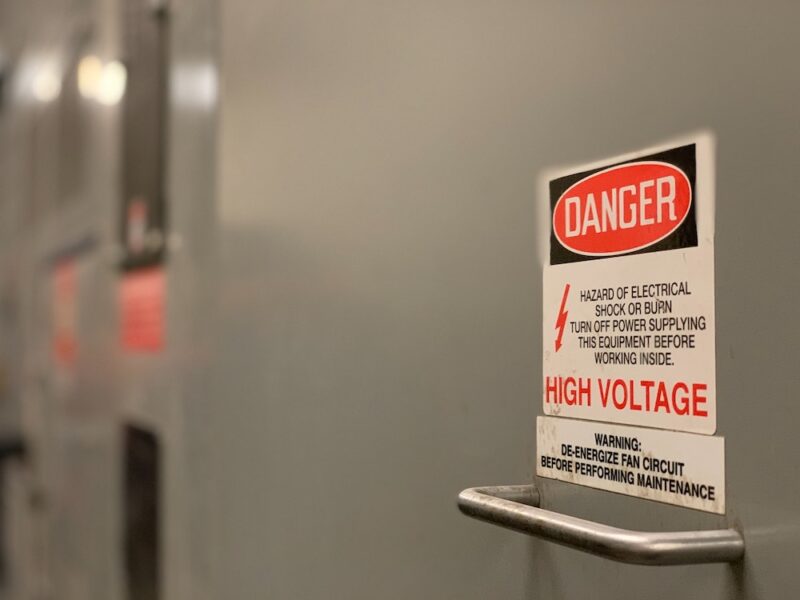
Resource Acknowledgments
The following resource was created in collaboration with Michael Sizer. Michael holds a technician’s diploma in electronics engineering and is an experienced sanctuary facilities manager and contractor who has worked for and with numerous animal sanctuaries in Ontario, Canada.
Electricity can play an important role in sanctuary work – the ability to run heating and cooling devices helps us keep resident living spaces safe and comfortable, being able to flip on an overhead light allows caregivers to more easily perform their responsibilities regardless of the time of day, and various plug-in tools come in handy from time to time. While electricity is helpful (and sometimes absolutely crucial), it can also pose a significant risk to humans and residents. Contact with electrical currents can result in injury and even death of human and non-human animals. Additionally, electrical fires are one of the leading causes of barn fires. To keep both residents and humans safe in sanctuary spaces, sanctuary operators must understand how and why electrical systems pose a safety risk and take steps to mitigate these risks as much as possible.
In this resource, you’ll see numerous references to electrical codes and general recommendations for electrical safety in agricultural settings. While we recognize that farmed animal sanctuariesAnimal sanctuaries that primarily care for rescued animals that were farmed by humans. are vastly different from agricultural settings, there are, unfortunately, no specific codes or universally accepted recommendations for electrical infrastructure and use specifically in sanctuary settings. Despite the many differences between animal sanctuaries and farmsFor-profit organizations focused on the production and sale of plant and/or animal products., when it comes to electrical safety, farmed animalA species or specific breed of animal that is raised by humans for the use of their bodies or what comes from their bodies. sanctuaries face many of the same risks as agricultural settings. Therefore, we must look to electrical safety requirements and recommendations for agricultural settings to ensure electrical safety in sanctuary spaces.
Check In With Your Insurance Company
In this resource, we’ll cover the basics of electrical safety, but we strongly encourage folks to also reach out to their insurance company. Not only will your insurance company be a good source of information, but by connecting with them, you’ll have peace of mind knowing you are meeting their requirements. They can offer you advice on best practices; some will even send a knowledgeable representative to your property to look for areas of concern.
Know Where Buried Electrical Lines Are Located
Accidentally digging into electrical lines can result in serious injury and even death. Why? Just think what might happen if you were to pierce into a live wire with a metal shovel. Electricity is always trying to return to its source. It will take all available paths to complete a circuit, whether they are intended paths or not, so if you or something you are in contact with becomes part of that circuit or creates a new pathway, you will receive an electric shock (or worse). A common misconception is that electricity always follows the path of least resistance, but this is simply not true. Electricity follows all available paths. So don’t make the mistake of thinking that you can safely touch exposed wires as long as the ground wire is in place. If you touch an exposed live wire or component, your body will become a path for current. Even if you’re lucky enough to avoid injury, hitting buried electrical lines is a costly mistake. Not only might you be stuck without power to some or all of your property (which could negatively impact your residents), but you will also need to pay to repair the damaged lines.
When you first acquire a property, it’s recommended that you hire a professional to come out and check the entire property for electrical, gas, and water locates. Be sure to document this information and update it as additional infrastructure is added. By knowing where underground electrical lines (and gas and water) are buried, you’ll be able to know where you can and cannot dig safely.
It’s Not Just Buried Electrical Lines That Can Pose A Hazard!
While buried lines carry unique risks, given that they’re concealed underground, it’s also essential to consider the risks associated with accidental contact with overhead electrical cables. Serious and even fatal accidents can occur if tall equipment comes into contact with overhead power lines. To avoid the risk of accidental contact or entanglement in overhead power lines, you should keep at least a 10ft distance between equipment and power lines. While this applies to all equipment, accidents may be more likely to happen with equipment that can change height. For example, a tractor or dump truck might typically have ample clearance under overhead lines when the bucket or bed is lowered, but when the tractor’s bucket is lifted or the dump truck’s bed is raised, contact with overhead lines may be possible (as shown in the graphic below). Because of the risks associated with overhead wires, burying them underground is preferable to suspending them overhead.
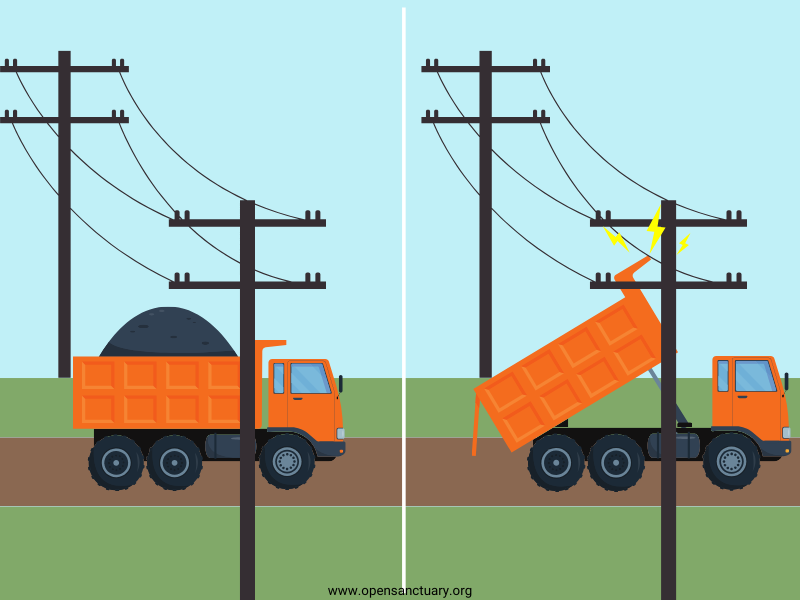
Of course, there are code regulations for burying wires, so be sure to follow the code. Wires and cables designed specifically for underground installation must be used, and the wire must be buried at least 18 inches below grade. A good practice when burying a wire is to lay it in the 18-inch (or deeper) trench and then apply about 6 inches of soil on top of the wire. Next, run caution tape on top of the 6-inch layer of soil, and then fill the trench (as shown in the graphic below). The caution tape acts as an alert to someone digging above the wire because they will reach the tape before reaching the wire.
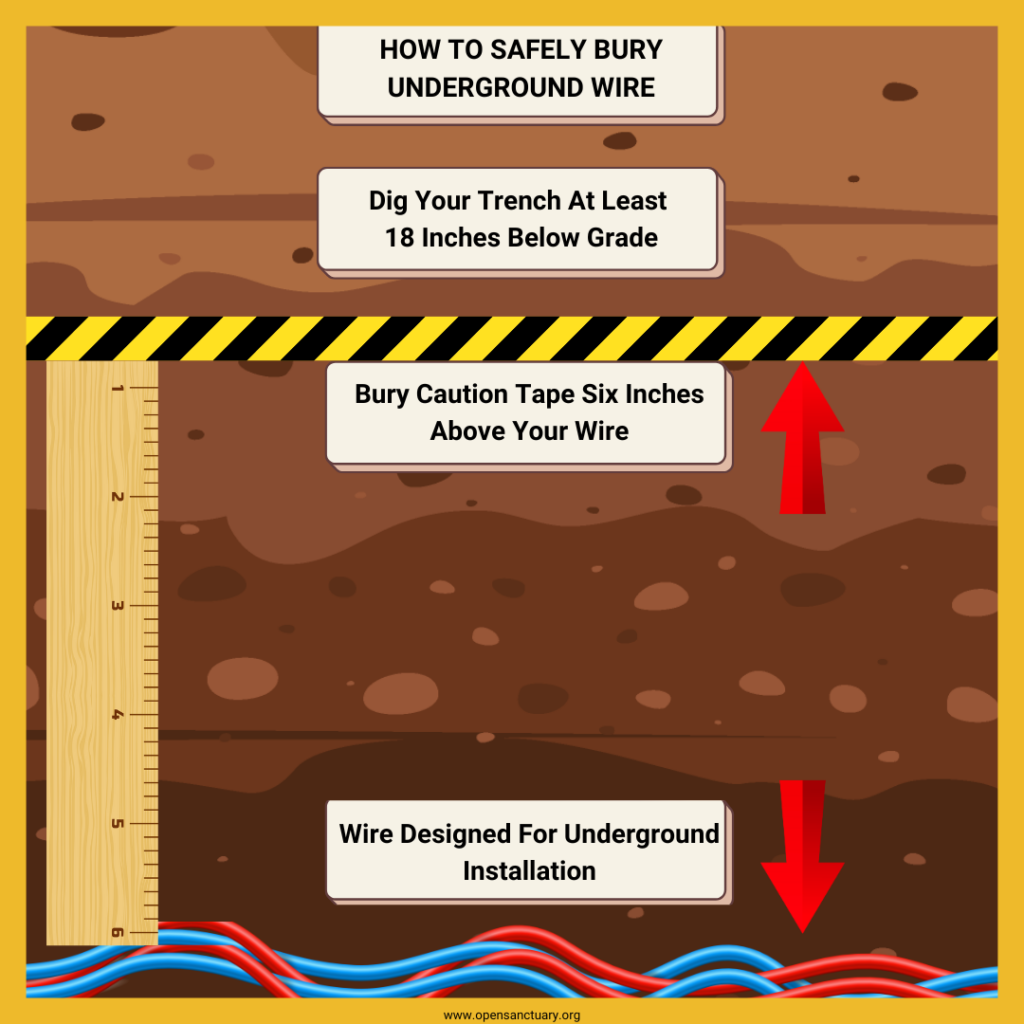
Work With A Licensed Electrician For Projects Involving Electrical Work
Improper installation of electrical infrastructure can lead to serious hazards (including short circuits and ground faults), and attempting to do electrical work without proper training can put the installer at risk. While it is legal in most places to do electrical work yourself if you own the property, we strongly advise hiring a licensed electrician to do electrical work. A qualified professional will ensure that any electrical installations and repairs are done as per building codes, which is required legally for safety reasons.
Additionally, a licensed electrician will be able to consider which materials are most appropriate to use in terms of protection from humidity, vapors, dust, etc., based on the environment they will be in. There are waterproof, dustproof, and explosion-proof electrical boxes, outlets, light switch covers, etc., that are designed for agricultural use. Failing to use components that provide the necessary protection from environmental conditions can result in serious safety hazards.
Outlets Should Always Be Covered!
Speaking of dust, it’s crucial to protect outlets from dust, cobwebs, debris, and moisture with appropriate outlet covers, even when they are in use. While some outlet covers lay flat against the outlet, others are a bubble design that can function whether there are plugs in the outlet(s) or not (these are often called “in use” or “while in use” covers).
A local electrician can also ensure that lightning arrestors are installed in the electrical panels and can advise you on whether lightning protection systems are warranted on your buildings. Lightning protection systems comprise lightning rods and wires connecting them to ground rods so current has a path to discharge to ground should lightning strike your building. In some areas, lightning is quite rare, and so lighting protection systems aren’t popular. But if you are located where lightning is common, you may consider the added benefits of a protection system.
Consider Lightning Protection For Metal Fences, Too
Installing ground rods and wiring them to the fence gives the charge from lightning strikes a path to the ground. This greatly minimizes the chance of someone being electrocuted if they are touching a metal fence when lightning strikes. A ground rod is recommended at every 150 feet of metal fence. So, as an example, if you have a fence that is 500 feet long, proper grounding would require four ground rods spanned at equal distances apart. (Three ground rods would suffice for 450 feet of fence, but the extra 50 feet in this example requires one more ground rod.) One crucial point to know is that there is a misconception that any old metal rod can be used as a ground rod – this is simply not true. Ground rods are made specifically to remain functional when buried long-term. Steel pipes rust and t-bars have paint coatings, and they rust, so neither is a reliable substitute for proper ground rods.
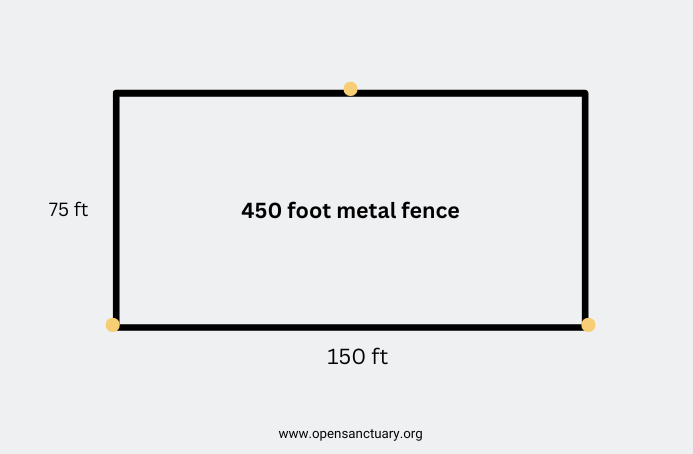
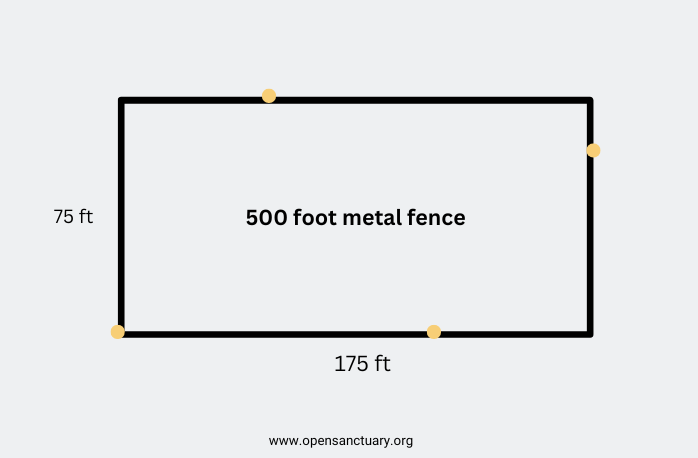
Be Strategic And Anticipate Future Needs
If you are in a position where you are building from scratch or doing renovations that involve electrical work, be sure to consider both your current and future needs. By discussing these needs with your electrician, they can ensure your electrical infrastructure can safely accommodate those needs. For example, suppose you know you’ll need to use multiple circulating fans to keep your pig residents cool. In that case, you should discuss this need with your electrician so they can ensure you have the infrastructure necessary to do that without overloading your system. You can also discuss the benefits of having certain appliances hardwired (wired directly into the electrical box) rather than needing to be plugged into a socket. A hardwired electrical appliance will have an inherently lower fire risk than one plugged into a socket. Therefore, for things that you plan to use long-term (for example, lights or fans), you can create a safer situation by having your electrician hardwire these appliances.
Of course, not everything will be hardwired, so be sure to also consider the things you will need to plug in. By identifying these things and considering where in the space you will need to use them, you can determine where outlets are necessary. We’ll talk more about extension cords later on in this resource, but you want to avoid using them as much as possible, so when considering outlet placement, you want them positioned so that you can use the device without using an extension cord. You’ll also want to consider the best height for the outlets to ensure cords can be kept safely out of your residents’ reach while still being accessible to sanctuary personnel. By considering these needs and planning for them ahead of time, you can save yourself headaches later on and avoid certain safety hazards!
Don’t Overload Your Electrical System
An overload occurs when too much electrical current (measured in amperes, abbreviated as amps or A) flows through a circuit. Electrical current produces heat, and electrical components (such as wires, electronic devices, etc.) can only handle a certain amount of current. Damage and dangerous overheating can occur if an overload goes on for too long. If you attempt to draw more electricity than your system or its components are rated for, you will cause an overload. Circuit breakers are designed to detect overloads and cut the power before dangerous overheating of conductors or damage can occur. However, if this does not happen, an overload can generate more heat than the components can handle, increasing the risk of fire.
Consider The Ramifications Of A Loss Of Power
If an overload occurs, the hope is that the circuit breaker will prevent a dangerous electrical situation by cutting the power. While this can help avert a fire, this necessary loss of power could negatively impact your residents depending on what device(s) is no longer powered and how long it is without power. Be sure to consider these secondary risks associated with overloads. What would happen if your heating or cooling devices lost power overnight? During very hot or frigid weather, this could result in serious and even life-threatening conditions!
To understand electrical overloads, let’s consider what an electrical system within a structure (such as a barn) entails. First, the structure will have an electrical panel that should house a main breaker and individual breakers. The panel box will be rated for a specific number of amps (amount of current). Each circuit breaker will also be rated for a specific number of amps. The panel will have room for a certain number of breakers, but that does not mean the panel can actually handle that many breakers. The total combined amperage of all circuit breakers in the panel should be equal to or less than 80% of the total number of amps the panel box is rated for in order to avoid an overload when all circuits are in use. Individual outlets are also rated for a specific number of amps, usually 15 or 20. Attempting to use a 15 amp outlet to power a device that pulls 18 amps will result in an overload. In some cases, multiple outlets might be connected to a single breaker. In this case, you must be careful not to draw more amperage from these outlets than the circuit breaker is rated for, or it will trip.
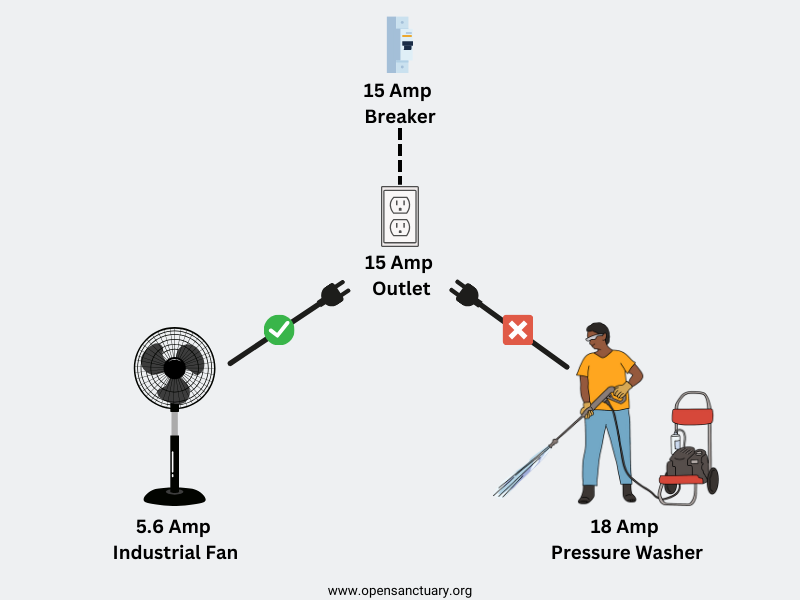
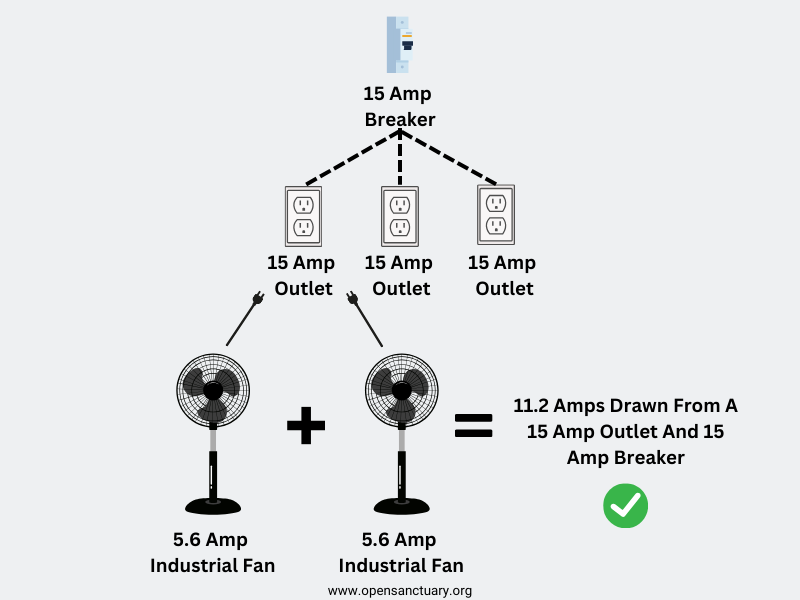
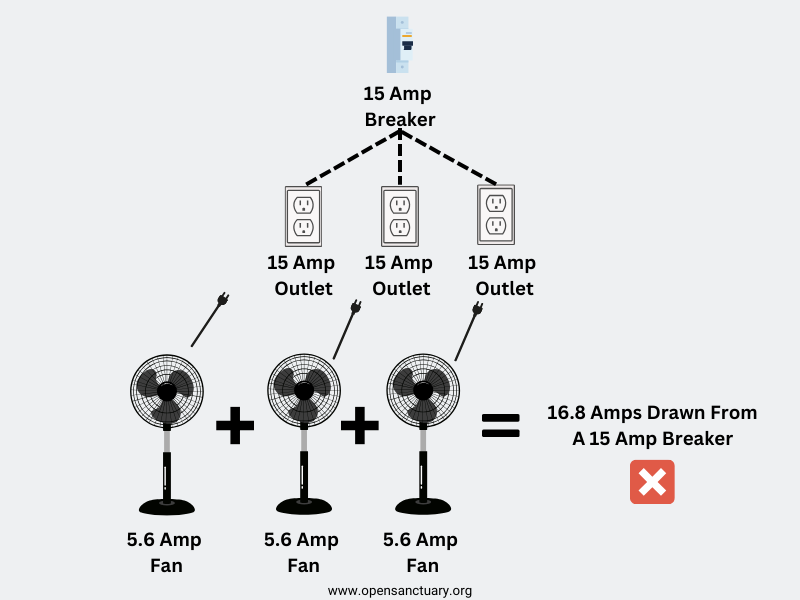
You must understand the capacity of your electrical system and its individual components so that you can avoid a potentially dangerous overload!
Be Aware Of The Devices That Draw The Most Current
Devices that produce heat draw the most current and pose the most significant risk of electrical overload. In a sanctuary setting, devices used to heat resident living spaces would fall into this category, as would incandescent lights. You must take care when using these devices to avoid creating an overload.
Provide Improved Electrocution Protection For Residents And Humans With GFCI
A ground fault circuit interrupter (GFCI or GFI) is a safety device that protects against severe shock and electrocution. It can also prevent some electrical fires and reduce the risk of other fires by detecting ground faults and interrupting the flow of electric current. A ground fault occurs when electricity travels through an unintended path to the ground. While this may occur due to an issue with the circuit creating an unintended pathway that allows the current to flow to the ground (for example, as a result of improper installation or a lack of insulation), it’s also possible for a human or non-human animal’s body to provide this unintended pathway to the ground. Both humans and non-humans can be burned, severely shocked, or even electrocuted if their body becomes the pathway through which electricity travels, which might occur when coming into contact with damaged equipment or when their electrical components are wet.
GFCIs work by constantly monitoring the flow of current through the circuit, comparing the outgoing and returning current. In the case of a ground fault, the returning current will be lower since some of the electricity will instead be traveling through an unintended path outside of the circuit. If the GFCI detects even a slight difference between the outgoing and returning current, it will quickly shut off the power and is designed to do so before someone can receive a lethal dose of electricity.
If you’re familiar with GFCIs in residential buildings, you may think they only belong in bathrooms and kitchens. The reason they’re recommended in these rooms is because of the presence of water. Really, GFCI protection is recommended anywhere electricity and water might be in close proximity, which in a sanctuary setting, would include all resident housing. GFCI units can be built into circuit breakers or receptacles.
To ensure continued protection, GFCIs should be tested after installation and monthly going forward. To test GFCI outlets, you can plug in a small device such as a switch-activated nightlight. After ensuring the device is powered, hit the “test” button on the GFCI. If the GFCI is working properly, the device will turn off. You can then hit the “reset” button to restore power to the outlet. If hitting the “test” button does not result in the device turning off, contact a licensed electrician to identify and remedy the issue. Sometimes, the GFCI protection is built into the breakers rather than the outlets. To test the GFCI function in that case, you will have to open the electrical panel door and press the test button on each breaker that has one. If the breaker trips when you press the test button, the GFCI protection is working, and you can reset the breaker. If the breaker doesn’t trip when the test button is pressed, the GFCI protection has failed, and an electrician is needed to repair the circuit.
Provide Arc Fault Protection With AFCI
To add increased protection to GFCI, an arc fault circuit interrupter (AFCI) can be installed in your barn’s electrical panel. This will cut the power if damage to a wire or device, or wet conditions causes arcing (a spark moving between two contacts). Electrical arcing is a major cause of fires, so arc fault circuit interrupters are highly recommended in agricultural buildings.
Protect Electrical Wiring From Physical Damage
To avoid a variety of safety issues, it’s essential that electrical wires are protected from physical damage from residents, wildlife, machinery, etc. All electrical wires in resident structures and outbuildings should be encased in conduit in order to protect them from sanctuary residents and wildlife. Wiring (in conduit) should be surface mounted rather than concealed between walls or in ceiling spaces. Surface mounting makes inspection and maintenance easier and can reduce moisture migration and the risk of damage from rodents. Additionally, if wires are concealed by a wall or ceiling, there is a risk folks won’t realize they’re there, which could lead to an accident if someone inadvertently cuts into or punctures live wires.

Not only does all wiring need to be in conduit, but you also need to ensure the conduit is properly secured against walls, ceiling, etc. While some species may not be strong enough to cause damage to conduit, consider that larger residents such as goats, pigs, or cowsWhile "cows" can be defined to refer exclusively to female cattle, at The Open Sanctuary Project we refer to domesticated cattle of all ages and sexes as "cows." could more easily damage conduit and the wires contained within if they are not flush against walls and are not properly secured. Conduit that is not flush against walls/ceilings is also more vulnerable to accidental damage by humans or machinery. The electrical code requires all conduit in agricultural buildings to be PVC (rather than metal). The dampness and possible exposure to manure gasses in barns cause metal conduits and metal armored cables to corrode prematurely.
Make Sure Electrical Devices Are Appropriate For The Environment
Earlier, we mentioned that a licensed electrician can determine the most appropriate materials to use in your electrical system to protect against dust, moisture, etc. Similarly, any electrical appliances used in the space must also be appropriate for the environment. To protect against dust, moisture, and corrosive gasses getting into the motor, electric motors used in resident living spaces should have a totally enclosed frame. There are different types of motor enclosures suitable for different applications, including Totally Enclosed Fan Cooled (TEFC), Totally Enclosed Non-Ventillated (TENV), Totally Enclosed Air Over (TEAO), and Totally Enclosed Wash Down (TEWD), which is designed to withstand high humidity and wet environments, including high-pressure wash-downs. While devices that have these types of motor enclosures are likely going to be more expensive than ones that don’t, it is imperative that you budget for devices that are safe and appropriate to use in resident living spaces. Purchasing devices that are really meant for indoor residential use (for example, an inexpensive box fan) poses a serious hazard because they are not built in the same way as devices intended for agricultural use and may allow dust and debris to reach the motor, which could result in a fire. While there are vast differences between a farmed animal sanctuaryAn animal sanctuary that primarily cares for rescued animals that were farmed by humans. and an agricultural setting, when it comes to mechanical and electrical devices for resident living spaces, you want to stick to products meant for agricultural use. This includes but is not limited to exhaust fans and circulating fans. Heating devices are sometimes the exception here. We’ll discuss this in the textbox below.
Heating Devices
Unfortunately, when choosing a safe heat source for resident living spaces, it’s not always as straightforward as just looking for something intended for agricultural use, and this is true whether they run off electricity or not. Some devices commonly used in agricultural settings carry serious risks and are best avoided. Though glass bulb heat lamps are commonly used in agricultural settings, we strongly recommend avoiding these devices as they pose a significant fire risk. According to Rutgers, of all heating equipment, heat lamps are the leading cause of fire. As if that weren’t reason enough not to use heat lamps, some glass bulbs release polytetrafluoroethylene (PTFE) as they heat up, which is highly toxic to birds when inhaled. The most appropriate heat source for your residents will vary depending on the species you care for, but we always recommend looking into alternatives to traditional heat lamps. All heating devices that require a power supply will carry some degree of risk, so care should always be taken when adding these devices to your residents’ living spaces.
There are devices that are specifically designed for use in animal living spaces (such as radiant heat panels, infrared overhead heaters, or ceramic heat emitters) that some sanctuaries have had success with. Other sanctuaries have opted to use portable oil-filled radiator heaters and ceramic wall-mounted heat panels and have found these to be preferable to other devices. When considering different heating devices, be sure to consider fire safety and resident safety. Hanging and wall-mounted devices should be properly secured to ensure they remain in place. Never hang a heating device from its cord! Free-standing devices must be placed on a flat, level surface to prevent them from being tipped over.
All heating devices should be kept away from bedding and other flammable materials, but those that become particularly hot will need additional consideration both in terms of fire safety and protecting residents from burns. Depending on the type of device you are using, this may require a bit of prep work before you can safely use the device. For example, the housing of oil-filled radiator heaters can get very hot, so special care must be taken to prevent contact with residents or flammable materials. This might be accomplished by elevating the device on a sturdy platform (ensuring it cannot fall over) and enclosing it in a custom-made wood and wire mesh “cage.”
Protect Electrical Cords From Residents
When using devices with electrical cords in resident areas, be sure to protect cords from residents. This is most easily accomplished by keeping cords out of the reach of residents (remember earlier when we mentioned considering the height of outlets?). If this is not possible, you’ll need to take steps to protect cords from being chewed, played with, or posing the risk of entanglement. This may be accomplished by very carefully securing cords to walls or posts with zip ties or fence nails. It’s vital that you do not damage the cord while attempting to secure it.
Regularly Dust Off Electrical Appliances, Outlets, And Lights
Dust and cobwebs can be flammable, so it’s important to regularly remove dust, cobwebs, and other debris that may accumulate on electrical appliances, lights, and outlets. In some cases, you may be able to wipe surfaces with a cloth or duster, but appliances with many nooks and crannies will be easier to dust thoroughly with a compressed air blow gun.
Regularly Inspect All Electrical Cords
To catch signs of an electrical issue or damage to cords, all electrical cords must be routinely inspected. If certain appliances are stored and only used seasonally or occasionally, thoroughly inspect the device, including the cord and plug, for signs of damage before use. For appliances that are more consistently in use, check cords and plugs regularly. Do not use devices that have damaged cords or plugs. In addition to checking for signs of damage, it’s also essential to check for heat or signs of burning/melting where it plugs into the wall. Contact an electrician if you note these signs, and do not use the affected outlet until an electrician deems it safe to do so.
Electrical Tape Is Not Sufficient!
With proper knowledge, it is possible to repair or replace damaged electrical cords, but this should only be done by folks who know how to do so. Simply wrapping a damaged cord with electrical tape is not sufficient!
Avoid (Or Seriously Limit) Extension Cord Use
We mentioned this earlier, but to avoid unnecessary hazards, you really want to avoid or at least seriously limit extension cord use. Extension cords should never be used while unattended and are therefore inappropriate for appliances that run constantly or need to run overnight. As such, extension cords are absolutely NOT a replacement for permanent electrical installations! Relying on extension cords to power necessary appliances that are used regularly or on a long-term basis (such as fans or heating devices) rather than having an electrician run power to the structure is unacceptable.
At The Open Sanctuary Project, unacceptable means that we cannot condone (or condone through omission) a certain practice, standard, or policy. See a more detailed explanation here.
That said, while it would be safest to avoid extension cords entirely, we do recognize that might not be entirely feasible. However, it’s important to understand that every plug in a socket is a potential fire risk, and using an extension cord doubles that risk by doubling the number of sockets in use. While there is inherent risk involved when using extension cords, there are things you can do to avoid additional risk. This includes:
- Only use extension cords rated for outdoor use (even if using them inside barns or other structures).
- Only use grounded extension cords (3 wire).
- Never use extension cords in wet areas. While outdoor extension cords are designed to withstand moderate moisture, it’s not safe to use them in standing water.
- Make sure you are using the correct gauge for intended use. The gauge corresponds to the thickness of the wire and the current (amperage) it can handle. As the gauge decreases, the thickness of the wire and the current it can handle increases. Just as you can overload a circuit, you can also overload an extension cord, which could result in a fire!
- Always check extension cords for damage (such as nicks) before using.
- Replace damaged extension cords. Do not attempt to repair them!
- Keep extension cords away from residents and machinery that could damage them (i.e., do not drive over extension cords).
- Protect extension cords from damage from sharp objects, heat, oil, and solvents that could damage insulation.
- Never connect multiple extension cords in order to increase length. Doing so will reduce the amperage rating of the cords and increase the risk of overload.
Have Electric Periodically Assessed By A Professional
While you should absolutely contact a licensed electrician if you are seeing signs of an electrical issue (such as dimming or flickering lights, sockets that are hot, strange noises or odors coming from circuits, or tripping breakers), it’s wise to also have your electric inspected annually even if everything seems to be working well. During this inspection, they may be able to detect and remedy an issue before it has the potential to cause a more serious problem! Degradation of electrical infrastructure can lead to safety issues, so proper maintenance is imperative!
SOURCES:
Electrical Safety In Agriculture | Virginia Cooperative Extension
Barn Fire Prevention | Canadian Farm Builders Association
15 Amp Vs 20 Amp Outlet: What’s The Difference? | Penna Electric
GFCI Fact Sheet | U.S. Consumer Product Safety Commission
Ground Fault Circuit Interrupters (GFCI) | Electrical Safety Foundation
Electrical Safety On The Farm | Cornell Agricultural Safety And Health Program
How Electricity Works | The Engineering Mindset
Electrical Current Explained | The Engineering Mindset
Overcurrent, Overload, Short Circuit, And Ground Fault | Dave Gordon
How Often Should You Have An Electrical Inspection? | Safe And Sound Electric
Electrical Systems In Barns | Ontario Ministry Of Agriculture, Food And Rural Affairs
7 Most Common Motor Enclosure Types Defined By NEMA Standards | Electrical Engineers Portal
Fire Prevention And Safety Measures Around The Farm | Rutgers
Electrical Safety | University Of Oregon
Electrical Safety In The Barn | South Dakota State University Extension (Non-Compassionate Source)
Non-Compassionate Source?
If a source includes the (Non-Compassionate Source) tag, it means that we do not endorse that particular source’s views about animals, even if some of their insights are valuable from a care perspective. See a more detailed explanation here.








